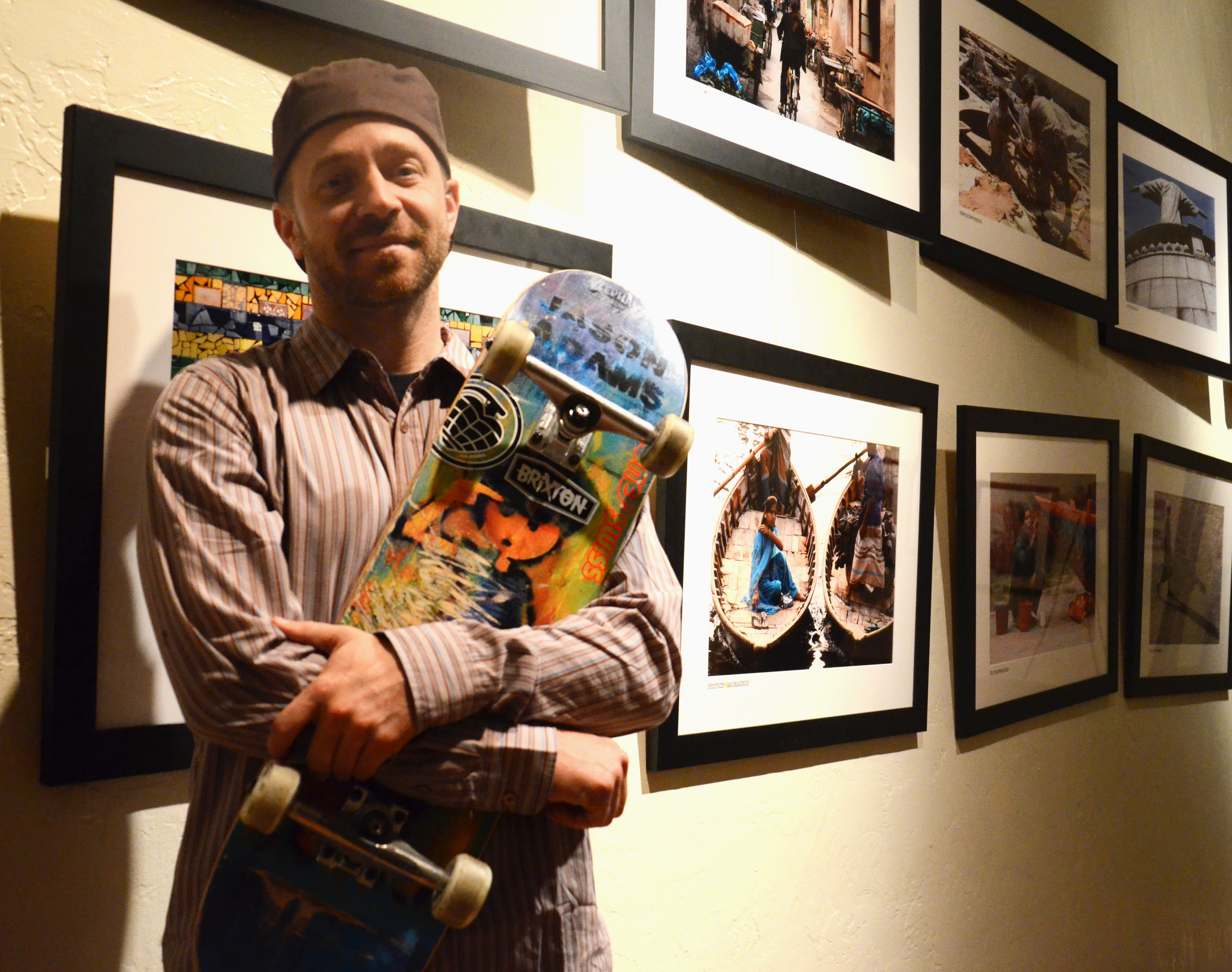Among the skateboarding community, Neal Hendrix is best known as a professional skater and X Games competitor. Yet in the Kerckhoff Art Gallery, he is better recognized for his work as a photographer. As the last exhibit in the Cultural Affair Commission’s Art Series, Hendrix’s work portrays images of thriving life across cultures in countries such as China, Brazil and Africa.
Hendrix’s exhibit opens its doors today at 6 p.m. with an opening reception provided by the Cultural Affairs Commission. While finishing up last touches on the exhibit, Hendrix met up with Daily Bruin’s Kelsey Rocha to talk about his journey from professional skateboarder to avid photographer.
Daily Bruin: What was your experience like in the X Games?
Neal Hendrix: I competed in the X Games for 10 years or so. And then I competed this year in the Asian X Games. For the one in L.A., I was not invited for the past couple years, so now I’ve taken up the commentary position. The X Games was a very fun experience and I won a few medals so it was a really cool experience.
DB: How did you get into skateboarding?
NH: I grew up in North Carolina and started with the kids in my neighborhood. Someone in my neighborhood got a skateboard so then I got a super cheap sporting goods skateboard. Then after I started picking up skateboarding magazines and videos I got really into it. My friends that started it kind of stopped straight away, but I was able to find new friends.
DB: How did you segue from skateboarding to photography?
NH: It was really just from traveling for skateboarding. Once I turned pro, I started competing and doing exhibitions and skateboarding tours all around the world. When I first turned pro in the early ’90s we weren’t really going to all these exotic places, but as skateboarding grew bigger globally, all of a sudden we had contests in Asia and South America and Australia and a lot of foreign places.
I really started taking photos because it was easier than getting postcards, you know? At first it was just to show my friends and family these places, but once I started carrying a camera around, I became passionate about it and it morphed into its own thing and a completely separate passion for me.
DB: What are your favorite things to photograph?
NH: Really just different cultures and different people. I’ve really just found that going to a lot of places, and even in poor countries, you can find a different type of beauty just in the people and in capturing their everyday lives or them working. For me, growing up in the United States being privileged and first-world, it makes you appreciate the way that people live. But I think that a lot of times there’s hidden beauty in these places where people are struggling.
DB: Would you say there’s a secret to getting the perfect shot?
NH: I think that going to really photogenic places helps. You’ll see that a lot of my photos are from Rio … and China is so photogenic. You can walk down any alleyway in Shanghai and Beijing and see like a hundred things you’ve never seen in your life.
I also like to shoot a lot of my stuff with a long lens. I feel like you can capture people without them even knowing. I mean, you can stand across the street and get a shot of someone working, or fishing or, you know, cooking a snake and they can’t even see you.
DB: If you could say there’s one thing you want people to take away from the show, what would it be?
NH: I would want the exhibit to motivate people to want to travel and see the world … and open their minds. I don’t expect everyone to get on a plane and go to Bangladesh, but I think that everyone has the innate desire to see other places. So I think that maybe seeing some of these images can get people excited to see other places. Like when you have your list of places you want to see, like Big Ben or the Eiffel Tower, you might also want to see these other places that excite the senses.
Email Rocha at krocha@media.ucla.edu.
